The final stop on our quest to master schwa will take us to the movies, so pile your crew into the car and get ready to enjoy the latest flick. If you close your eyes, you may just pick up the scent of fresh, buttery popcorn and detect the excited whispers of families settling into their seats as the previews begin to roll.
Recently, we’ve begun our quest to better understand the most common vowel sound in the English language: the schwa sound. We’ve discovered that all schwas say that lazy sound, /uh/, and they must be in unaccented syllables. So far, we’ve learned three different types of schwa patterns. Our Majestic America rule teaches us about the open ‘a’ schwa. We also learned that closed ‘a’ and ‘o’ will make the schwa sound as demonstrated by the Bacon Salad rule. Finally, we discovered that any vowel followed by the letter ‘l’ will change to schwa at the end of a word, and we called this rule Travel by Camel. If you’ve yet to check out these rules, follow the links above to learn more! We will see you back here when you’re done.
Now that the stage has been set, let’s get to our featured presentation!
 Photo by Corina Rainer on Unsplash
Photo by Corina Rainer on Unsplash
Before You Begin
Before teaching these concepts to your student, make sure they can...
Getting Started
This schwa rule is a bit different from the previous schwa rules in that, it is dependent on a word having at least three syllables. Here’s how it works:
Let’s say that I’m trying to spell the word optimist. If I split it into syllables, it sounds like this op/tuh/mist. Hmm...that middle syllable is making a familiar sound. It’s that schwa again! Well, this schwa sound just keeps coming back! It’s almost like part four in a multi-movie series—Schwa Strikes Back: Coming to a blog near you. Alright, back on track.
If we look at that word again, notice that the schwa sound is both open and in the middle of the word. I’ll show you what I mean by using the schwa symbol to represent that /uh/ sound:
Op/tƏ/mist
This is where our new rule comes in. This rule pertains to:
✓ Middle syllables
that are...
✓ Unaccented
and...
✓ Open I’s or E’s
When we see this, we have the perfect conditions for a schwa.
Lights, Camera, Action, Schwa!
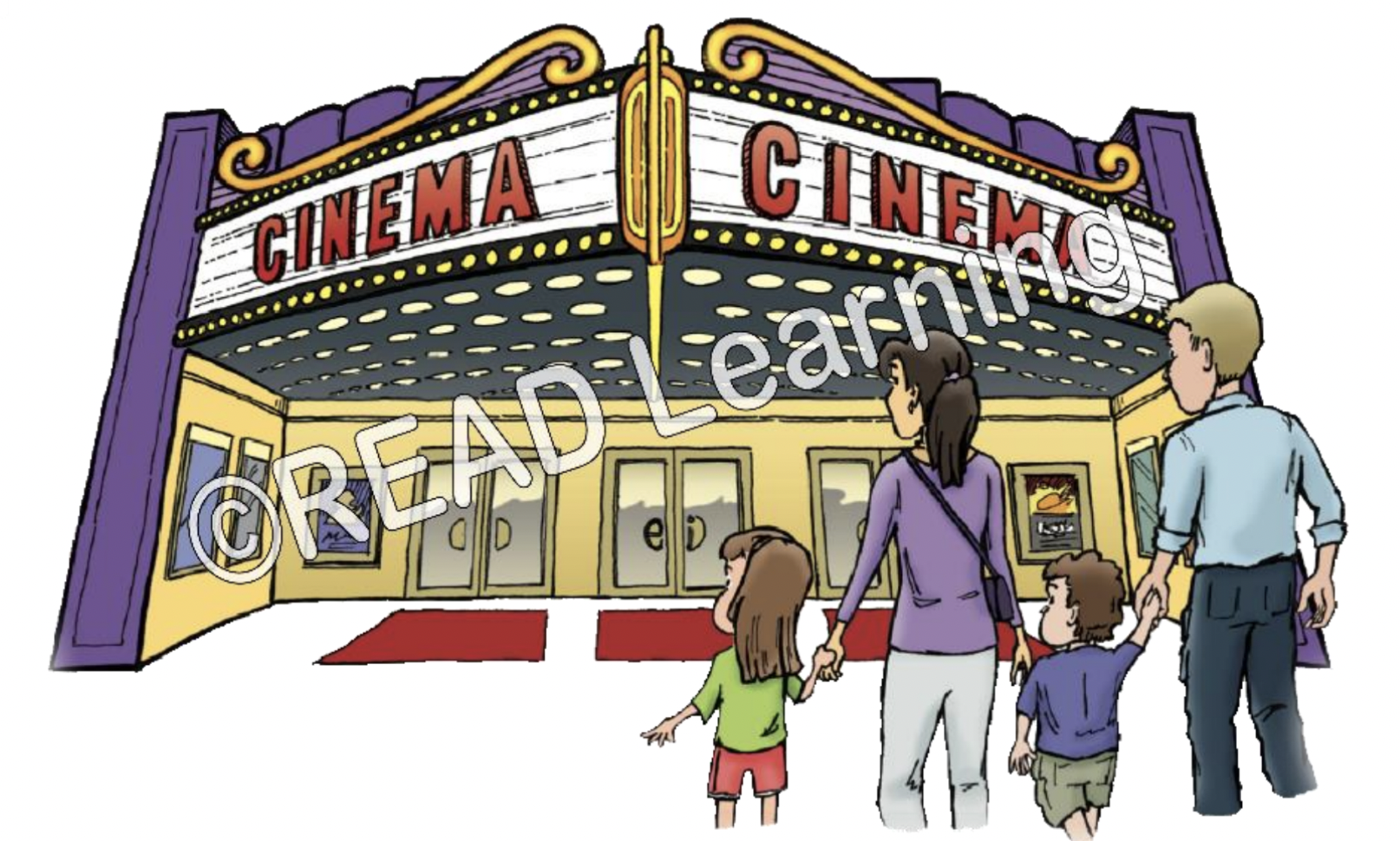
That’s right, folks! We’ve reached that point where I reveal our new rule. The name of the rule is Family Cinema, and it echoes the sentiment that we began with—the thrill of going to the movies. Here’s the complete rule:
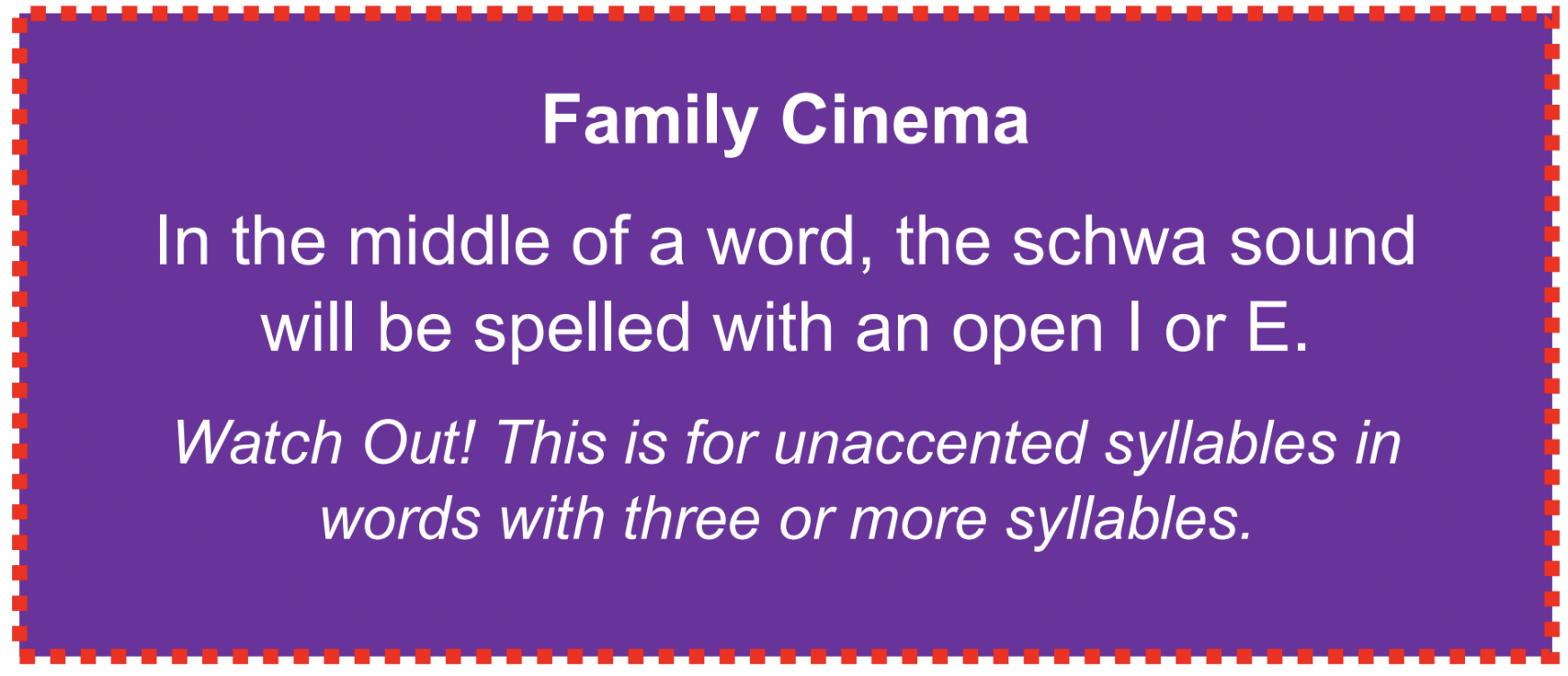
The Scoop on Spelling
As with every schwa, spelling is the hardest part. As we know, all schwas, no matter how they’re spelled, sound the same—/uh/. So how do I know which letter to use when I hear schwa? Well, let’s use some of our other types of schwas to rule out some options. If you’ve been following along with our previous schwa rules, you’ll notice that both Travel by Camel (Ə+L) and Bacon Salad (Ə+ any consonant) won’t work here because these two rules require the schwa to be closed. Majestic America might work, as this rule states that open ‘a’ will change to schwa if it’s unaccented. Hmm...and now our new rule, Family Cinema, tells us that open ‘e’ or open ‘i’ will change to schwa if they’re open, unaccented, and in the middle. In reality, if we hear a schwa sound that’s open and in the middle, it’s difficult to know if it should be spelled with an ‘a’ (Majestic America), an ‘e’ (Family Cinema), or an ‘i’ (Family Cinema).
If you think this sounds familiar, then you really have been following along! This is a similar conundrum that we had in our last blog, so let’s follow a similar format using the word optimist. I am truly a fan of using guided practice like this with my students!
“Optimist. Hmm...I’m going to tap out each syllable.”
“Op—tƏ—mist”
“Now, I’ll just say and spell the first syllable, Op”
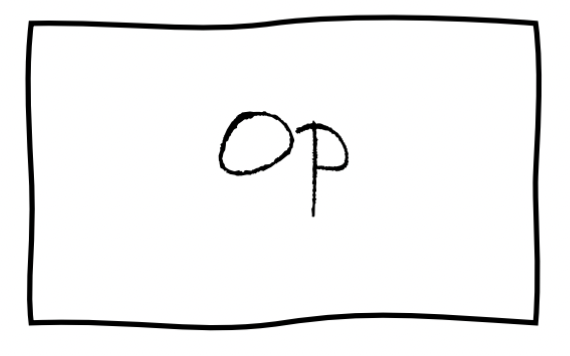
“Okay. That was easy! Now, I’ll say and spell the second syllable, TƏ. What I hear is T-Uhh. Whenever I hear an Uhhh sound at the end of the middle syllable, it’s going to be a schwa. I’m going to leave it blank for now and just spell the sounds I know for sure.”
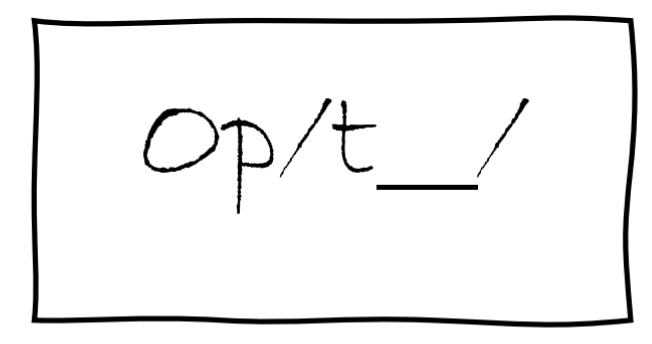
“I’d like to finish the word before I figure out that schwa. Mist. That’s easy too!”
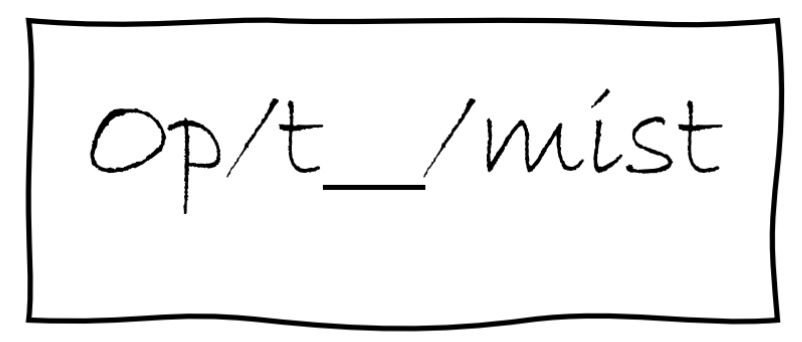
“Voila! Now, I have to tackle that missing schwa letter. I know that I have a couple of schwa rules. Let me see which one fits this word. It’s open and in the middle syllable. I can either choose Majestic America or Family Cinema.”
“I have three choices for spelling this type of schwa, A, E, or I. Which one do I choose?”

This is the point in my teaching where students learn how to effectively use spell check either on the computer or using a spell-checking device to assist in this choice.
“There really isn’t a way to know for sure, so I’m just going to take my best guess. Let’s see how the letter E looks.”
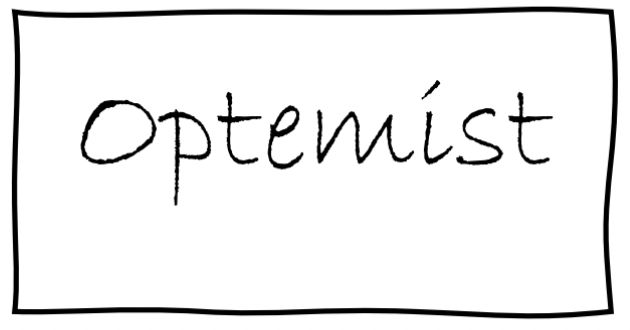
“Hmm...that looks a little strange. Let’s see if I can check it using spell check.”
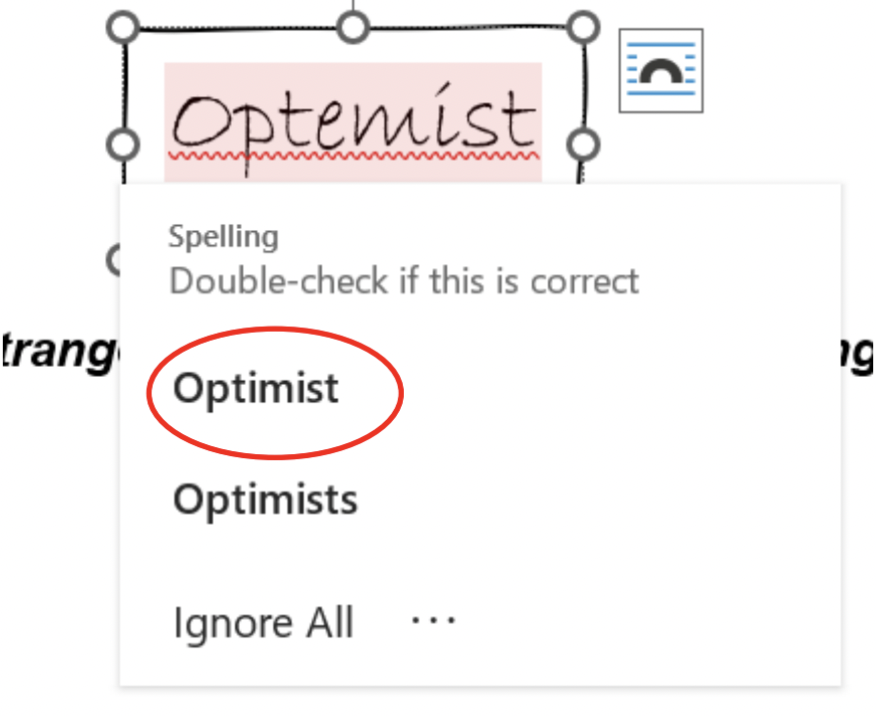
“Okay, great! The first option looks perfect. It must be the letter I that has changed to schwa.”
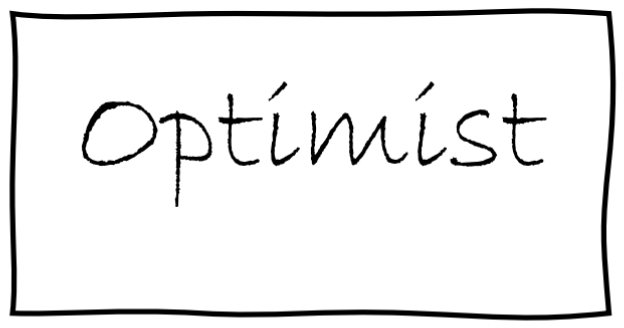
This thought process can be challenging to teach without the use of modeling, auditory drills, and visuals. If this sounds overwhelming, have no fear! I have the resources to assist you with each of these objectives. Best of all, they’re FREE! This blog is honestly just the preview before the grand finale where I give you—yes, you heard me right—I GIVE you some free reproducibles to practice schwa with your students. Of course, you’ll find even more, including our amazing spelling rule collector cards contained in each of our Silver Moon Spelling Kits.
Important Tips to Consider
As the Credits Roll...
Okay, I know there’s that family in the front who have already begun to put on their jackets and pack up their popcorn, and there are a few antsy folks who have already begun to descend the stairs to leave the theater as the credits begin to roll on the screen. However, you and I both know that there’s usually a little something special
waiting for those who are patient enough to sit through the endless names of cast and crew. The lights are beginning to go up on those who made it to the very end, and here it is—the reward you’ve been waiting for! I have not one, not two, but FOUR pages of free resources to leave you with as you practice schwa with your students. You can find them at the link below.
Family Cinema Reproducibles HERE
As always, if you found this blog helpful, please share it with your fellow teachers, parents, and interventionists. Interested in learning more? You can find our other spelling topics HERE, and don’t forget to check out our complete guide to spelling at www.Silvermoonspellingrules.com . If you need help understanding syllable division rules, see our video section (vlogs) HERE.
Happy Teaching!
Written by:
Kate Wagner, BSE
Reading Interventionist, Remote Learning Coach
Good food and traveling?! How can this blog get any better? Today I’m going to take you on a little trip via an unconventional mode: between the bumps and humps of a camel. Along our journey, we will make one stop for lunch, and you guessed it, we will be enjoying the spoils of a deliciously fresh bacon salad.
 Photo by Jassim Shanavas on Unsplash
Photo by Jassim Shanavas on Unsplash
Perhaps you recall our previous journey across America in my blog about our spelling rule called Majestic America. This discussion centered around the concept of schwa and will help serve as your tour guide for today’s expedition. If you haven’t yet taken that journey, check it out first and return to our hump-backed tour after you’re done.
Before You Begin
Before teaching these concepts to your student, make sure they can...
Photo by Jassim Shanavas on Unsplash
Getting Started: A Brief Review of Schwa
You may remember that schwa comes into play when the regular vowel sound is too difficult to say efficiently. Instead of saying that regular vowel sound, we replace it with the schwa sound to make that word easier to say. Schwa is kind of a lazy sound; it’s the same sound that the short letter ‘u’ makes (uhhh). For a more complete description of this phenomenon, please check out my previous blog about schwa as I describe the Majestic America rule.
Today, I’m going to describe two more schwa rules. To begin, I’d like to try something with you. It’s an approach I use with my students when we are discovering new rules. Take a look at the two lists of words below. I’ve sorted them based on the two schwa rules that we are going to learn today. I’ve marked the vowels changing to schwa in red. In most dictionaries, you’ll see schwas noted with the diacritical schwa symbol: Ə. We’ll circle back once you’ve had a chance to examine the two lists.
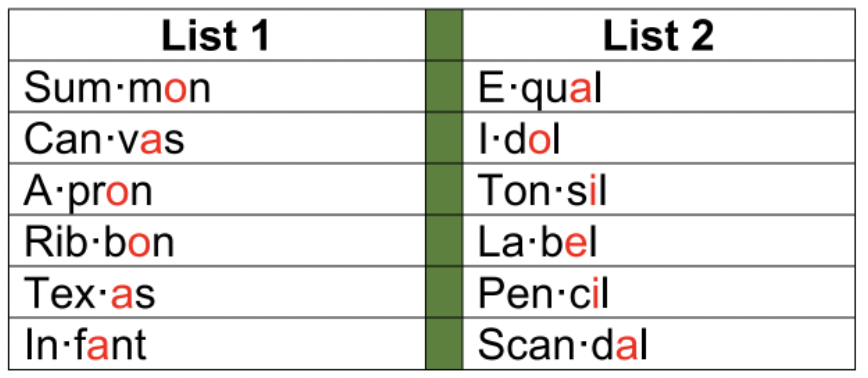
Now, if you were my student, this would be the point where I’d ask you if you noticed any patterns in the letters that changed to schwa. I may guide you by saying:
“Write down the letters that became schwa in List 1.”
Hopefully, you’ve noticed that they’re all O and A.
“Are those open or closed O’s and A’s?”
“That’s right! They’re closed.”
At this point, I would not yet reveal the rule. Instead, I’d move on to the second list, where I may guide my student to notice that those schwas can be several different vowels: O, A, E, and I. They’re also all closed, but specifically, they’re closed with the letter L.
If this is your first time teaching schwa to your student, you’ll have to take some time to talk about accenting. You may recall that schwas can only appear in unaccented syllables. As lazy sounds, they are the product of our need to speak with efficiency. Accented syllables are our first priority and will always follow the regular spelling sounds. Conversely, schwas exist to make those unaccented syllables easier and more efficient to say.
When I’m teaching spelling and reading rules, I like to use this guided discovery approach for several reasons. The first reason is that it simply breaks up the monotonous “teacher talk.” As teachers and parents, we all know the moment when we realize that our students have stopped listening. You know, the Charlie Brown teacher phenomenon where we are no longer saying words of any worth. The second reason for a guided discovery method is that it allows students to take more ownership of their spelling rules. When students feel like they cracked the code to a spelling rule, they’ll be
more likely to remember it!
I know that I promised you a journey with delicious food, and the moment is finally upon us! Let’s take a look at those new rules.
Bacon Salad
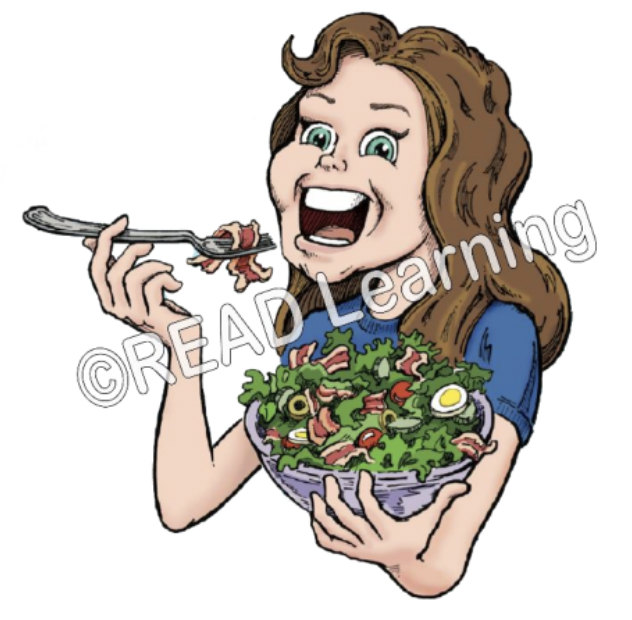
As we reflect upon the two lists of words that we’d examined above, our fresh, crispy Bacon Salad rule corresponds perfectly with List 1. Just as we had discovered, this rule is all about the closed and unaccented O’s and A’s. Here’s our complete spelling rule:
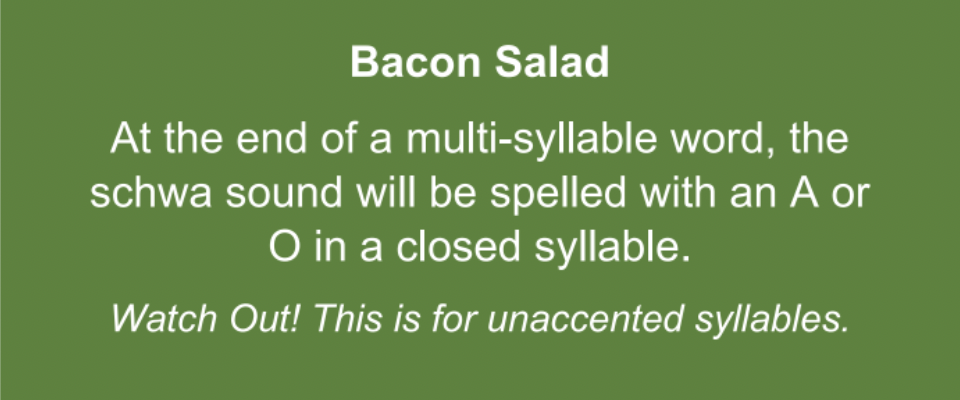
Notice that the name of the rule, Bacon Salad, models exactly what this rule is all about. The biggest takeaways from this rule are: 1. This schwa is closed and 2. The only two letters that can change to schwa for this rule are O and A. Therefore, if your student notices a closed O or a closed A in the second syllable of a word, prompt them to recognize that there is likely a schwa in that word.
After such a delicious meal, I think we are ready for the next phase of our adventure!
Travel by Camel
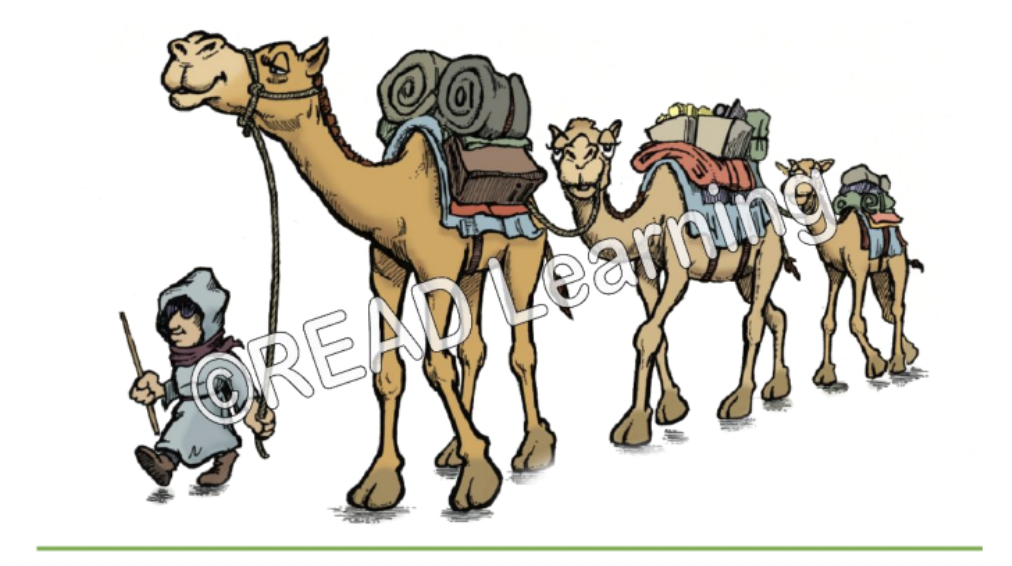
Our Travel by Camel spelling rule corresponds to List 2 of the words presented above. This rule is a bit more complicated because there are more options for spelling schwa than there were for our previous rule. In fact, any vowel can change to a schwa if it’s unaccented and closed off by the letter L. Here’s what this rule looks like:
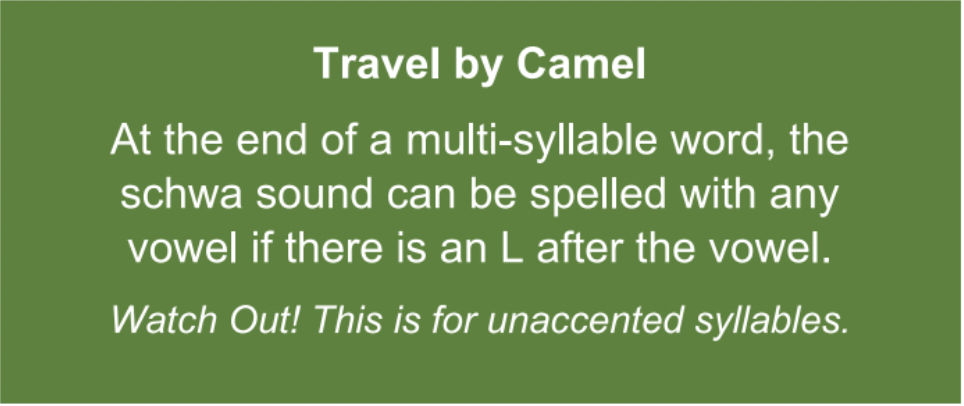
Make sure that you point out that whenever your student sees a vowel+L pattern at the end of a word, they should think about the schwa sound.
Pretty simple, right? Well, not exactly. The toughest part about schwa is getting students used to recognizing their spelling choices when they come across a schwa. I do a lot of thought-process modeling for students to encourage them to build strong problem-solving skills. For example, let’s say I’m trying to spell the word ‘Wagon.’ Here’s the thought process I would model for my students.
“Wagon. Hmm...I’m going to tap out each syllable.”
“Wa—gon”
“Now, I’ll just say and spell the first syllable, Wa”
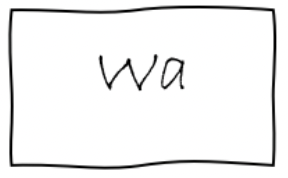
“Okay. That was easy! Now, I’ll say and spell the second syllable, Gon. What I hear is G-Uhh-N. Whenever I hear an Uhhh sound in the second syllable, it’s probably going to be a schwa. I’m going to leave it blank for now and just spell the sounds I know for sure.”
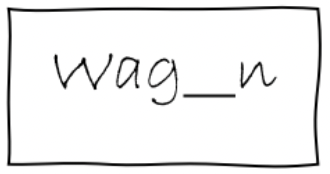
“Okay, that was easy too. Now, I have to tackle that missing schwa letter. I know that I have a couple of schwa rules. Let me see which one fits this word. It’s closed off by the letter N, and it’s at the end. It must be Bacon Salad!”
“I have two choices for spelling this type of schwa, O and A. Which one do I choose?”

Now we have come to a crossroads. There really is no way of knowing for certain which letter to use for spelling each of these schwa sounds. The good thing is that there are two tools to guide students’ thinking about schwas. The first is that the spelling rule itself certainly narrows down their spelling choices. In the example above, there are only two choices for spelling a Bacon Salad schwa: O or A. The second tool that students begin using is spell-check. This could be in the form of an embedded spell-checking tool in a word processing program, the dictionary, or a portable electronic spell checker. Here’s how I model this conundrum:
“There really isn’t a way to know for sure, so I’m just going to take my best guess. Let’s see how the letter A looks.”
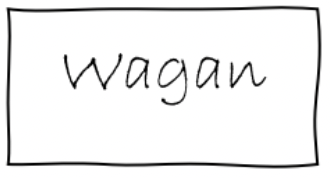
“Hmm..that looks a little strange. Let’s see if I can check it using spell check.”
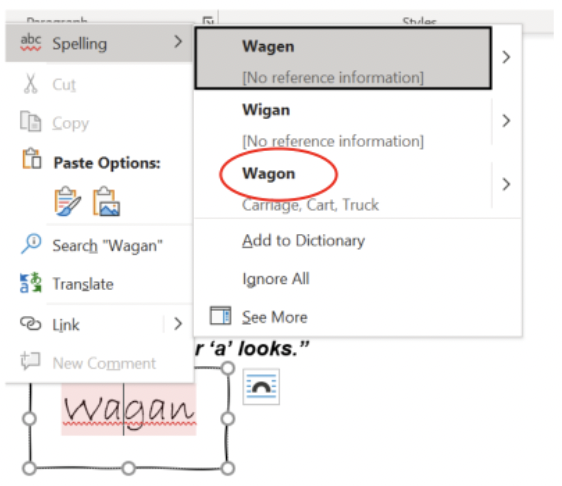
“Okay, great! I can tell that the first two options don’t work with the word or for my spelling rule, so it must be the third option down, W-A-G-O-N.”
I would likely repeat the same thought-process modeling with a Travel by Camel word. Of course, this one is tricky because students will have many choices for filling in that schwa blank! However, if you make it to the end of our journey, you’ll be rewarded with a great thought map as part of our FREE reproducible that you can use with your students to guide their thinking. They can be found at the end of this blog.
For additional practice, I like to walk my students through a series of visual and auditory drills to reinforce the sound for schwa, as well as how to spot it in a word. Don’t forget that there are many more quick and easy activities in our Silver Moon Spelling Kit!
Important Tips to Consider
As We Wrap Up Our Journey...
The salad has been munched, and our trusty camel crew has taken us to the end of our journey. Now that we’ve unpacked these rules, it’s time to unpack our bags and give them a try! Below, you’ll find an itinerary full of helpful activities for you and your student to practice each of these spelling rules, and unlike an action-packed vacation, they’re FREE! Check them out at the link below.
Bacon Salad and Travel by Camel Reproducibles Here
As always, if you found this blog helpful, please share it with your fellow teachers, parents, and interventionists. Interested in learning more? You can find our other spelling topics HERE, and don’t forget to check out our complete guide to spelling at www.Silvermoonspellingrules.com . If you need help understanding syllable division rules, see our video section (vlogs) HERE.
Happy Teaching!
Written by:
Kate Wagner, BSE
Reading Interventionist, Remote Learning Coach
The queen wanted a quick fix to the ‘Qu’ query. You see, everyone was asking her why she never did anything without her loyal ‘U,’ and quite frankly, she quaked at the thought of being without her ‘U’!
I wonder if you’ve caught on to my quips, but if you haven’t, we are going to be exploring the ‘Qu’ spelling pattern. Additionally, we will explore two long vowel sounds that ‘U’ can make.
Make sure your student can...
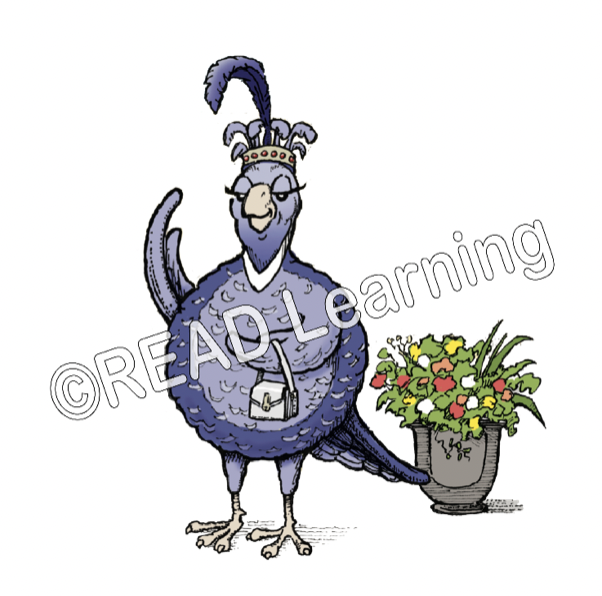
And now to introduce you to her majesty, Queen Quail. It’s important to teach your student that the letter ‘Q’ cannot stand alone without the letter ‘U.’ What’s especially fun is to recreate our story about Queen Quail and her faithful bodyguard, the letter ‘U.’ Begin by having your students visualize royalty out in public.
“Imagine the queen surrounded by her court. The letter ‘U’ is the head of her court. He is her faithful bodyguard and always comes with her wherever she goes. So whenever you’re spelling a word, always remember to add the ‘U’ after the queen. Her bodyguard will always follow after her—wherever she goes.”
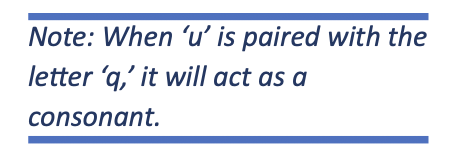
The next step is to reinforce the sound that ‘Qu’ will make. ‘Qu’ is kind of a combination sound that sounds like /kw/. When you teach this concept, practice saying the correct sound while showing a visual of the letters ‘Qu.’ Then, have your student do the same! It’s helpful to also ask your student to write the letters as they say the sound.
And that’s it! Although this seems like a simple concept, it can be tricky for students to immediately demonstrate automaticity without repetition, so get ready to find creative ways to practice. The good news is, I have some free activities at the end of this blog to help with that practice!
Now, if you look closely at our Queen Quail, you’ll notice some hidden surprises in the picture that serve as fun reminders of the rule. Speaking of, here’s the complete rule:
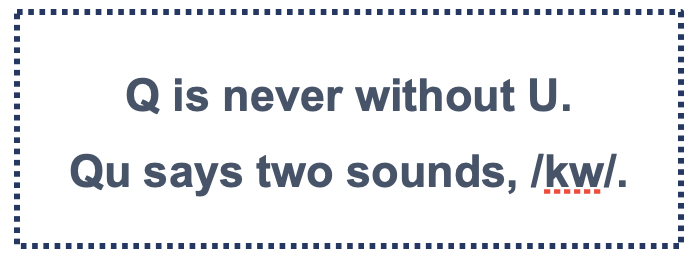
Of course, we all know that the letter ‘U’ can also appear on its own. For this next rule, make sure your student knows their short vowel sounds. Explain that when a vowel is closed off by a consonant, it is called a closed syllable, and the vowel will likely be short. Such as in this word:

However, when a vowel is not closed by a consonant, it will make its long sound. Now, most vowels have just one long sound, but the letter ‘u’ has two long sounds. Let’s take a look at our new rule to understand those two sounds a bit better.
![]()
What I love about our spelling rules is that their names help us understand exactly what they’re all about. I’ll show you what I mean. When the letter ‘u’ is open, it can make two sounds. The first sound is /oo/ as in the word ‘Emu.’ The second sound says /ū/ as in the word ‘Menu.’
I’m sure you’ve been wondering if there is a fun picture to go with our Emu on the Menu rule. There is! I was saving it for last!
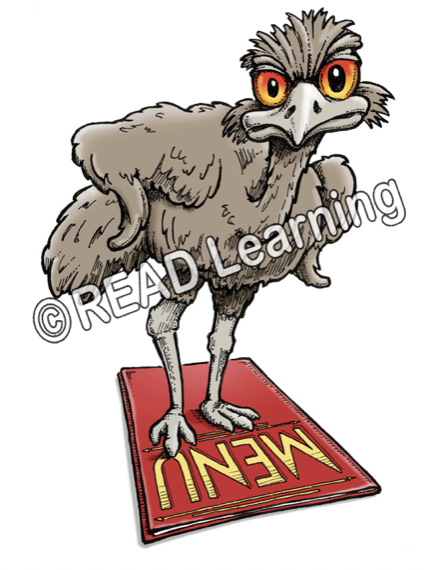
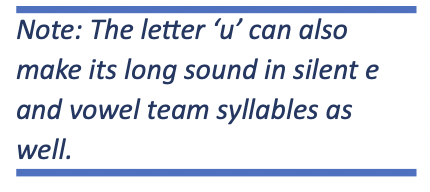
This allows you to focus on what matters most: learning and applying the rule. I highly suggest the Silver Moon Spelling Rules cards complete with illustrations for this rule. Both student and instructor sets of cards can be found here.

You can encourage your student to mark their vowels long or short. With ‘Qu,’ I often encourage my students to underline or box the two letters together, as to reinforce that ‘u’ is acting as a consonant, rather than a vowel. Check out our instructional video to get more tips and tricks for teaching syllable division techniques here!
You may find that students have learned to memorize a lot of words. This is especially common when working with older students. Therefore, it’s difficult to know for sure if your student has really learned the spelling rule to the point of generalization (note that this is the ‘good kind’ of generalization). Using a mix of real words and nonsense words helps you better understand what your student knows and eliminates the memorization variable.
Creating sentence frames are another good way to fade supports while practicing a spelling rule. You can find sentence frames for each rule in our FREE resources below.
Now that we’ve come to the end of our exploration of ‘U,’ I’d like to share some practice resources with you. When working with these concepts, practice will build automaticity. Our free reproducibles can help jumpstart your teaching practice.
Queen Quail and Emu on the Menu Reproducibles Here
Happy Teaching!
Written by:
Kate Wagner, BSE
Reading Interventionist, Remote Learning Coach
The Huge Hedgehog

This rule is a follow-up to the Gentle Giraffe rule. It involves this spunky, slightly huge, hedgehog! Because words in English cannot end with the letter J, it’s important to let your student know that when they hear /j/ at the end, they must choose a different spelling. To introduce this spelling rule, it’s helpful to spend some time reviewing short versus long vowel sounds. This concept is the building block to the huge hedgehog rule. This rule works similarly to spelling words that end with /ch/ using the spellings CH and TCH. To learn more about this rule, visit our blog called Munch a Batch of Cookies.
As we revisit our furry friend, we can use the name of his rule to help us to understand what’s going on with this rule:
Hūge Hĕdgehog
Notice that /j/ is spelled with GE when it follows a long vowel, while /j/ is spelled with DGE when it follows a short vowel. It’s that simple! Let’s look at that complete rule:

Important Tips to Consider
Students often accidentally pronounce DGE as /d-j/, so I like to practice reading both GE and DGE by writing them on index cards. Then, I alternate pointing to them as my student reads each sound.
This allows you to focus on what matters most: learning and applying the rule. I highly suggest the Silver Moon Spelling Rules cards complete with illustrations for this rule. Both student and instructor sets of cards can be found here.
You may find that students have learned to memorize a lot of words. This is especially common when working with older students. Therefore, it’s difficult to know for sure if your student has really learned the spelling rule to the point of generalization (note that this is the ‘good kind’ of generalization). Using a mix of real words and nonsense words helps you better understand what your student knows and eliminates the memorization variable.
Creating sentence frames are another good way to fade supports while practicing a spelling rule. You can find sentence frames for each rule in our FREE resources below.
One More Giant Surprise
Now that I’ve introduced you to both rules, perhaps you’ll feel more confident in unraveling the mysteries of G with your students. Of course, it helps to have two adorable characters to reference in the process. I’m sure you’re asking yourself, ‘how can this get any better??’ Well, it gets better. To help you and your students practice these two new rules, I’ve created a set of FREE activities that you can simply click, print, and teach! Enjoy them at the link below:
Huge Hedgehog Reproducibles Here
As always, if you found this blog helpful, please share it with your fellow teachers, parents, and interventionists. Interested in learning more? You can find more spelling topics HERE, and don’t forget to check out our complete set of teaching resources at www.Silvermoonspellingrules.com.
Happy Teaching!
Written by:
Kate Wagner, BSE
Reading Interventionist, Remote Learning Coach
Let’s start with a scenario. I am working with a student on the basic letter sound correspondences, and I get to the letter G. I don’t know about you, but this is one letter sound correspondence that makes me hold my breath. Why? Let’s reenact a conversation that I’ve had many times while showing students the letter G:
“What is the most common sound for this letter?”
“/j/”
“Hmm…that’s one sound it can make, but that’s not the most common sound.”
“Really? But what about the in words, ‘giraffe,’ or ‘gem’? I hear G make that sound all the time!”

Now, I’m sure we all recognize that this student isn’t entirely wrong. In fact, they have some good foundational skills for the rule that I’m about to show you. However, with this student, I’ll hold back on teaching the less common sound for G. You see, students working on the most common phoneme-letter correspondences aren’t quite ready for alternative letter sounds, and of course, the alternative letter sound for G is /j/, while the most common sound for G remains the /g/ sound as in the word “goat.”
It may sound like I’m backtracking on our primary focus for today, but if we look at the big picture, it’s important to recognize that reading and spelling concepts should get introduced at just the right time in a student’s learning. When introduced too early (or too late), it can lead to confusion and slow student progress.
Prior to studying systematic spelling and reading strategies, the scope and sequence of teaching these concepts (the order in which we teach them) was a bit lost on me. Thankfully, we’ve made it easy to see where you were and where you’re headed as a teacher with our easy-to-follow Silver Moon teaching guides. You can find all three sets on our website here. To extend my little soapbox on scope and sequence, I have a quick checklist for you to consider prior to teaching the spelling and reading rules about G’s alternate sound.
Before You Begin
Make sure your student can...
The Gentle Giraffe Loves Gym

Now, on to the rules you’ve been waiting for! Meet our first friend, the gentle giraffe. As you can see, the gentle giraffe is all about getting in his daily workout at the gym! While he finishes his workout, let’s explore what his rule is about. This reading rule reminds us that G can make a secondary sound when it is directly followed by an e, i, or y. G’s secondary sound is called it's soft sound, and it sounds just like the letter J. It says /j/. Notice that the name of this rule helps us to see an example of each ssseaky vowel changing the sound of the letter G. Check it out!
Gentle Giraffe Loves Gym
Here’s the complete rule:

Check out the Gentle Giraffe reproducible HERE.
As always, if you found this blog helpful, please share it with your fellow teachers, parents, and interventionists. Interested in learning more? You can find more spelling topics HERE, and don’t forget to check out our complete set of teaching resources at www.Silvermoonspellingrules.com.
Happy Teaching!
Written by:
Kate Wagner, BSE
Reading Interventionist, Remote Learning Coach
We’ve all been there: palms sweaty and heart racing just before we are supposed to take the exam that we feel completely unprepared for. To make matters worse, we are surrounded by classmates who seem to know exactly what they’re doing while we flounder in our own panic!
 Photo by Thought Catalog on Unsplash
Photo by Thought Catalog on Unsplash
Okay, perhaps we are a bit removed from these experiences at this point in our lives, but our students certainly aren’t! In fact, as we are all aware, they often experience similar anxiety every time they’re asked to read and write in the classroom, surrounded by classmates who just seem to “get it.” Therefore, I provide you with a reading and spelling rule that will continue our mission to reduce the stress in our students, bringing them closer to acing that exam.
Before You Begin
Getting Started
At this point, you’re probably asking yourself why we started off with such a stressful topic. Aside from putting us into the shoes of our students, the word ‘exam’ has a very difficult spelling pattern that is often overlooked. You see, the letters E-X, when combined, sound like the name of the letter X on its own, which throws off many students. Furthermore, the corresponding phoneme for “X” is a complex sound that sounds like something akin to the combination of /k/ and /s/.
As educators, we often see students who struggle with spelling words that begin with EX. Take a moment to think about how you’ve seen your students spell any of the following words:
Example, Explain, Extent, Exact, Exist
I’m sure you’ve seen many different spelling combinations including:
Xample, Ecsplain, Exstent, Egzact, Agzist
Of course, we know that these versions of the words are not quite right, but to our students, this sound is pretty difficult. That’s why we’ve created a spelling rule to give students an EX-plicit formula for this spelling sound.
Extra Exam
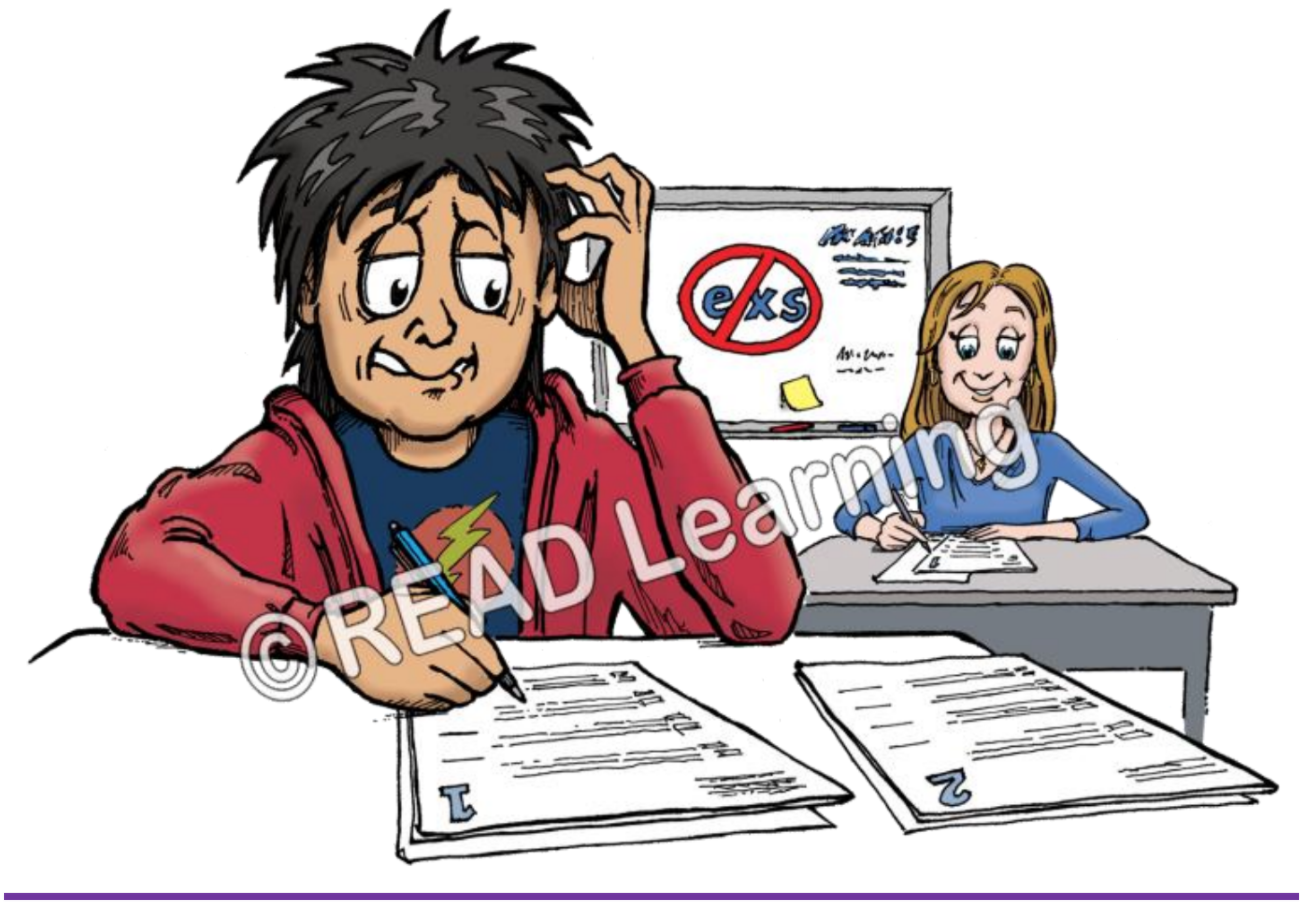
Our spelling rule, Extra Exam, shows students how to read and spell words that have EX as their beginning syllable. Let’s revisit that list of words from above and sort them into two categories:

You may notice that there are two sounds that EX can produce: one that sounds like /egz/ and another that sounds like /exs/. The sound that EX will produce, depends on the sound that follows it. If there is a consonant sound after the EX, it will sound like /exs/, but if there is a vowel sound after the EX, it will sound like /egz/. When teaching this to your student, consider exploring this concept in a similar way using syllable division and a guided sort of various words spelled with EX. Point out that, although it sounds like there is a Z or an S in each word, those sounds are simply part of that tricky letter X, and they often carry into the second syllable of the word.
At Silver Moon, we know that spelling and reading rules (also called spelling and reading patterns) are easier to remember if we have a catchy phrase or visual to go with them, so we’ve given you both! Here’s the complete rule for EX called “Extra Exam”:
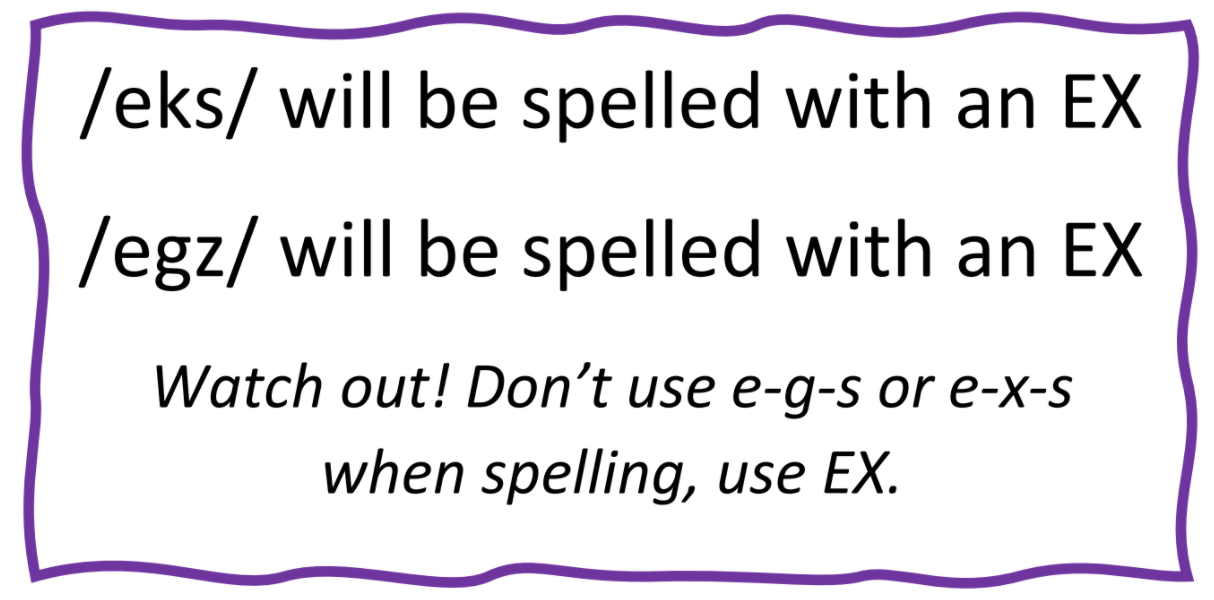
After presenting this rule to your student, be sure to practice both words that sound like /exs/ and those that sound like /egz/. Following this guided practice, you can easily make a connection between spelling words with EX and reading words with EX.
Important Tips to Consider
Before We Turn in that Exam
Hey, sometimes the exam is only as hard as we make it in our minds. It turns out, this one was pretty simple, and better yet, we’ve aced it! As you take one last deep breath to release all of that test-taking anxiety, click on the link below to download your FREE reproducibles to help your students practice the Extra Exam rule. I promise they might even be more fun than they are stressful.
As always, if you found this blog helpful, please share it with your fellow teachers, parents, and interventionists. Interested in learning more? You can find more spelling topics HERE, and don’t forget to check out our complete set of teaching resources at www.Silvermoonspellingrules.com.
Happy Teaching!
Written by:
Kate Wagner, BSE
Reading Interventionist, Remote Learning Coach
As a natural English language inquirer, my friends have come to see me as the resident spelling guru of our group, so naturally, I get all the puzzling spelling questions. My most recent inquiry was, “I heard that something called schwa is the most common vowel in the English language. I thought the only vowels were ‘a, e, i, o, and u.’ What in the world is a schwa?” At this point, I asked her if she really wanted to know. I mean, I get pretty jazzed about these sorts of topics, but I wasn’t sure if she was ready for a full-blown English lesson. This schwa thing is sort of a crazy concept that takes some sorting out. Since you’re here, I’m guessing you have a bit more patience than my friend did, so today, I’ll take you through the schwa journey. Before we can begin this journey, let’s talk about prerequisite skills to teaching schwa.
Before You Begin
Getting Started: What is Schwa?
Now, in order to get you into the correct frame of mind for schwa, picture the audible sound you might make as you leave the hustle and bustle of the workplace to sit down in front of a crackling campfire or, perhaps, the beautiful scene of a glassy lake. You’re probably making that sweet sound of relaxation. “Uhhhh...” I’ll give you a visual to aid in the imagery.
 Photo by James Wheeler on Unsplash
Photo by James Wheeler on Unsplash
“Uhhhhh...” That’s exactly the sound we’re going to talk about today. You see, there’s this tricky thing that happens to the sounds of some vowels when the conditions are just right. It’s kind of like finding that perfect fishin’ hole just before it rains. It doesn’t happen all the time, but when it does, things get interesting! That situation is called a schwa. What’s a schwa? Well, it’s a special sound that certain vowels make in the right conditions. That sound is the same sound that the short letter “u” makes!
So, back to my friend’s question, “Why is schwa the most common sound in our language?” Well, the letters that can change to that schwa sound in the right conditions happen to be a, o, e, and i. And of course, ‘u’ already makes that same sound as schwa. Therefore, schwa shows up a A LOT in our language. In fact, we probably end up saying “uhhh” more than we realize! Now we know that schwa and its corresponding sound is incredibly common, but I haven’t exactly explained why it exists. Schwa happens when saying the regular vowel sound would be too much work for us to say efficiently. You see, despite its lazy sound, schwa exists so that we can speak more quickly and efficiently. Let me give you an example:
..........Say the word, “America.”
..........Now, say it again, but say each ‘a’ with the long /A/ sound instead of the schwa sound.
You might have noticed that the second way was much more difficult to say. That’s exactly why we created schwa. If we go back to the word “America,” there are two letters that changed to that schwa sound. I’m going to mark them with the schwa symbol. It looks like an upside down ‘e’ in most dictionaries.
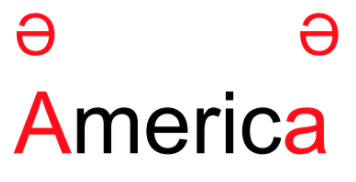
As the most common vowel sound in the English language, schwa can appear in many different situations. We have a rule for each of these situations, but today, I’m just going to talk about one of those schwa rules. In the word above, each of the letters that changed to the schwa sound is the letter ‘a.’ That’s the first part of the rule. The second part of the rule is that they are both open syllables. This means that when the word is split into syllables, these letters are open at the end of each syllable. The final part of the rule states that they are unaccented. This means that the schwa (any schwa) cannot appear within a syllable that is accented. Every word in our language has exactly one accented syllable, and because schwa is such a lazy sound, it would rather be in an unaccented syllable. Notice that this rule will have three components to it: letter ‘a,’ open syllable, and unaccented syllable.
Note: Accented syllables will ALWAYS follow the regular spelling sounds, and they will sound exactly as they look. Accented syllables are rule followers!
Majestic America
Before I give you the complete rule, I want you to try something for me...
..........Say “Majestic America”
..........Now, divide each word into syllables. It should look something like this:
..........Ma·jes·tic A·mer·i·ca
..........Listen as you say it. Do you hear those schwa sounds? Mark the letters that make that schwa sound /uh/.
![]()
To keep things simple, the name of our rule also has clues as to how the rule works! Majestic America is no exception. In fact, our open-‘a’-schwa rule can be found three times in the name of this rule! Here’s our complete spelling rule:
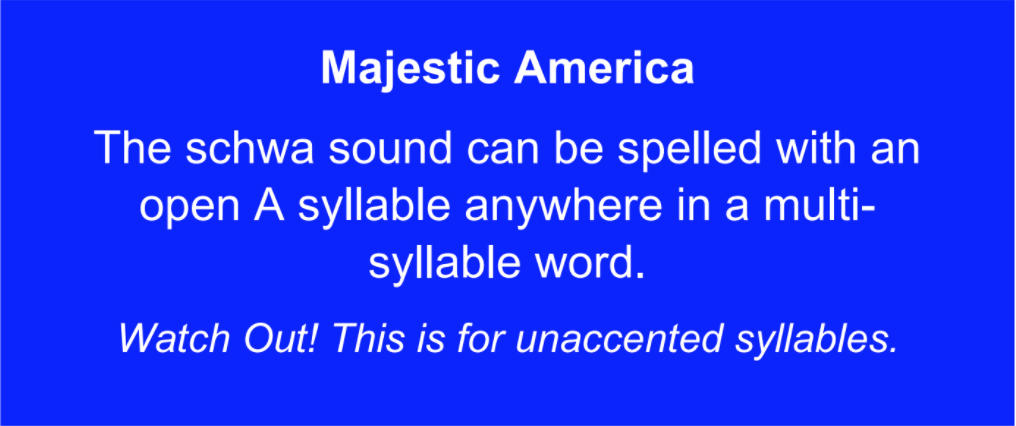
Do you remember that beautiful scene we explored at the beginning of our discussion? You’ll find a similar visual on our spelling rule card as well. It serves as a reminder of the name of our rule and the overall “vibe” of schwa: a lazy and relaxed /uhhh/ sound.

To get students used to this concept, I might walk through a series of visual and auditory drills to reinforce the sound for schwa, as well as how to spot it in a word. I will give you guides for both drills in our FREE reproducibles at the end of this blog. Don’t forget that there are many more quick and easy activities in our Silver Moon Spelling Kit!
Important Tips to Consider
Before We Relax
This brings us to the end of our UH-mazing journey across America. As you settle into your comfy chairs, you can rest easy knowing that you have some great resources coming your way as you navigate schwa with your students. Click on the link below to download your reproducibles and get started!
Majestic America Reproducibles Here
As always, if you found this blog helpful, please share it with your fellow teachers, parents, and interventionists. Interested in learning more? You can find our other spelling topics HERE, and don’t forget to check out our complete guide to spelling at www.Silvermoonspellingrules.com. If you need help understanding syllable division rules see our video section (vlogs) HERE.
Happy Teaching!
Written by:
Kate Wagner, BSE
Reading Interventionist, Remote Learning Coach
As the days get longer and the weather gets warmer, it’s easy to allow our minds to wander to lazy summer days eating sweet treats to the tune of carnival rides and laughter. I’d like to keep this sentiment alive with our next rule: Taffy Apple.
 Photo by John Jackson on Unsplash
Photo by John Jackson on Unsplash
When it comes to sweets, it’s really difficult to have just one, so let’s have TWO. After all, this is a doubling rule!
Before we dig into this sweet, sticky rule, let’s go over some prerequisite skills your student should have before they begin to double letters in the middle of words.
Before You Begin
Getting Started
What I find challenging about doubling rules is that, although there may be two letters in a row, we can only hear one sound. One letter is voiced, while the other is silent. Therefore, it’s easy to miss a doubling rule.
Start by getting your student acclimated to doubled letters, syllable division, and syllable types. You can do this by giving your student the following list on a piece of paper with the attached guided practice instructions. I have another version of this list in my FREE reproducibles download at the end of this post with an answer key.
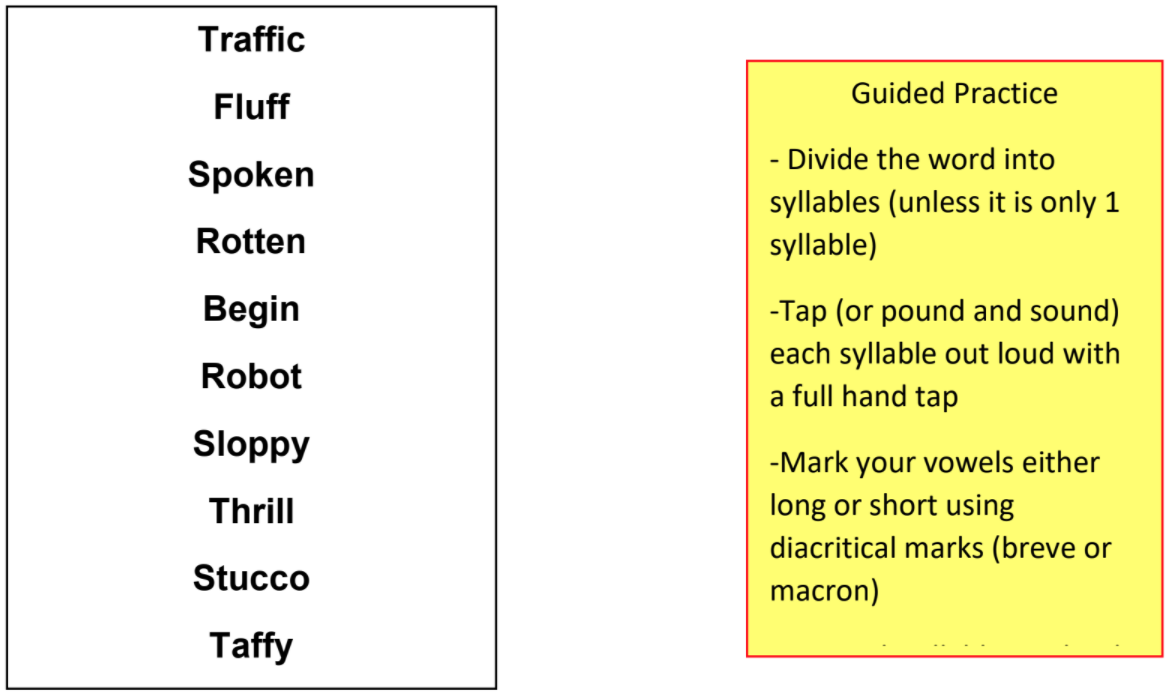
Biting into Doubling
Now that you’ve primed your student for this rule, pull just those words from the list that have doubled letters.
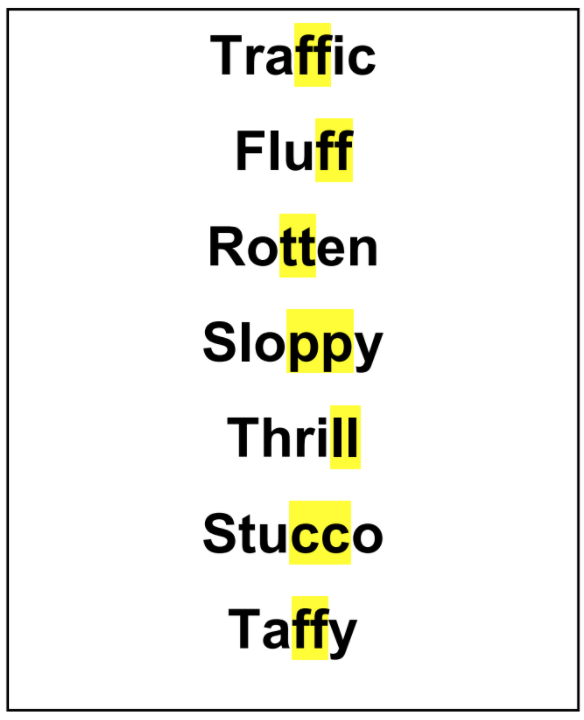
Notice that we already know why two of these words have doubled letters. “Fluff” and “Thrill” both follow an old familiar rule, Sam Loves Fried Zucchini. Of course, Sam Loves Fried Zucchini is only for 1 syllable words. The other words will follow our new doubling rule because our new doubling rule is for the middle of multi-syllable words. As your student taps out the remaining words, make note that there are short vowel sounds at the end of the first syllable in each word, so what you’ll hear is this:
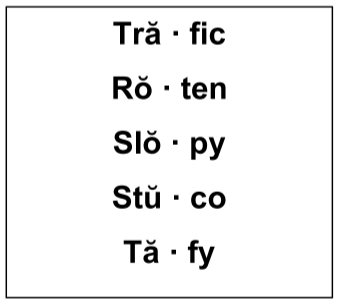
What’s important to connect is that short vowels must be closed by a consonant, so spelling these words as I have them above is a bit of a conundrum. Let’s look at the word “Tafy” for example. The ă as it’s written here would be read long (ā) because it’s not closed. Do not fear! We are not without hope for closing these short vowels. All we need to do is double the next sound after the short vowel.
Taffy Apple
As you might have noticed, this is a tricky rule to explain without first taking your student on the same journey that we just took together. And where are we now? Well, we’re at the moment we’ve all been waiting for: the moment we sink our teeth into our new spelling rule. When I think of the name of this rule, I can imagine the sweet, delicious crunch of a taffy apple, and I hope you can too!
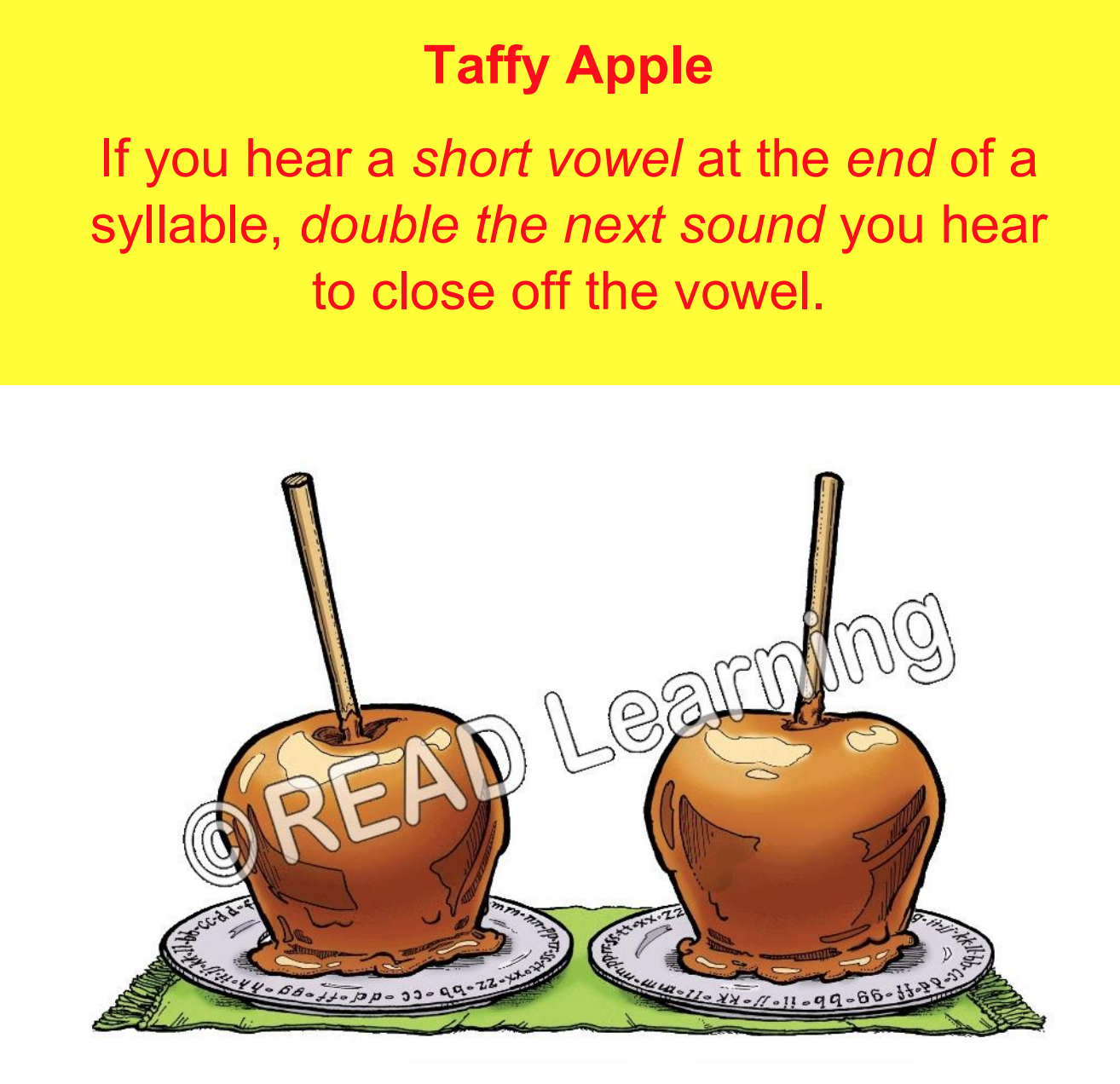
Now, it’s easy to forget that this spelling rule is really just that: a spelling rule, rather than a reading rule. Therefore, it’s important to eventually practice this rule without visual assistance, relying on syllable division and vowel sounds. I might give my student an auditory drill with a mix of examples and nonexamples. It might go something like this:
“I say ‘Taffy.’ Now, you say ‘Taffy.”
“Taffy”
“Tap out ‘Taffy’ into its syllables.”
“Ta—fy"
“Will this word need the doubling rule?”
“Yes, because there is a short ‘a’ at the end of the syllable.”
“Great! Now, try writing it down to double check.”
Important Tips to Consider
Time for Dessert!
Just like our beloved sweet treats, we saved the best for last! I have some FREE reproducibles that I’d like to share as you navigate this new spelling rule. Unlike those impossible carnival games, you don’t have to do anything to win this prize. Simply click and print!
Taffy Apple Reproducibles Here
As always, if you found this blog helpful, please share it with your fellow teachers, parents, and interventionists. Interested in learning more? You can find our other spelling topics HERE, and don’t forget to check out our complete guide to spelling at www.Silvermoonspellingrules.com . If you need help understanding syllable division rules see our video section (vlogs) HERE.
Happy Teaching!
Written by:
Kate Wagner, BSE
Reading Interventionist, Remote Learning Coach
Psst...PSST! I have a secret to share with you...I know the secret to spelling a really tricky sound. It’s one of those sounds that even good spellers sometimes mix up. Do you know the best part? I give you permission to share this secret with ANYONE!
If you’ve been following along, I’ve been sharing tips and tricks related to spelling the /k/with its kooky, sometimes pesky, series of spelling patterns. This is the secret to spelling /k/ in the middle of a word.
Before You Begin
● Teach spelling /k/ at the beginning of a word (find out more here)
● Teach spelling /k/ at the end of a word (find out more here)
● Distinguish the differences between long vowels, short vowels, and consonants
● Distinguish between one-syllable and multi-syllable words
● Demonstrate ability to divide multi-syllable words
 Photo by Annie Spratt on Unsplash
Photo by Annie Spratt on Unsplash
Now For the Secret
Before I spill the metaphorical beans, I am going to stress that this rule is only needed for multisyllable words, where there is a need to spell /k/ in the middle of a word. However, if you can recall our other /k/ rules, you’ll be in good shape for this one.
To begin, there are three choices for spelling /k/ in the middle:
C, CK, and K
As with our rule Cubs Can Drink Cola, always try the letter “C” first. If that letter works, stop there. If there is a ssssneaky vowel after the /k/ sound (e, i, or y), then try using “CK.” “CK” will only work if there is a short vowel right before that sound. Does that sound familiar? If so, you may be thinking of the Sick Elk rule. What happens if “C” didn’t work and “CK” didn’t work? Well, your last choice will always be “K.”
Whew! Sounds complicated! How can we simplify this a bit? If you’ve gotten to know us well enough here at Silver Moon Spelling, you know that we always have a catchy slogan to swoop in and jog your memory. This spelling rule is no exception.
The Secret Cricket Has Spoken
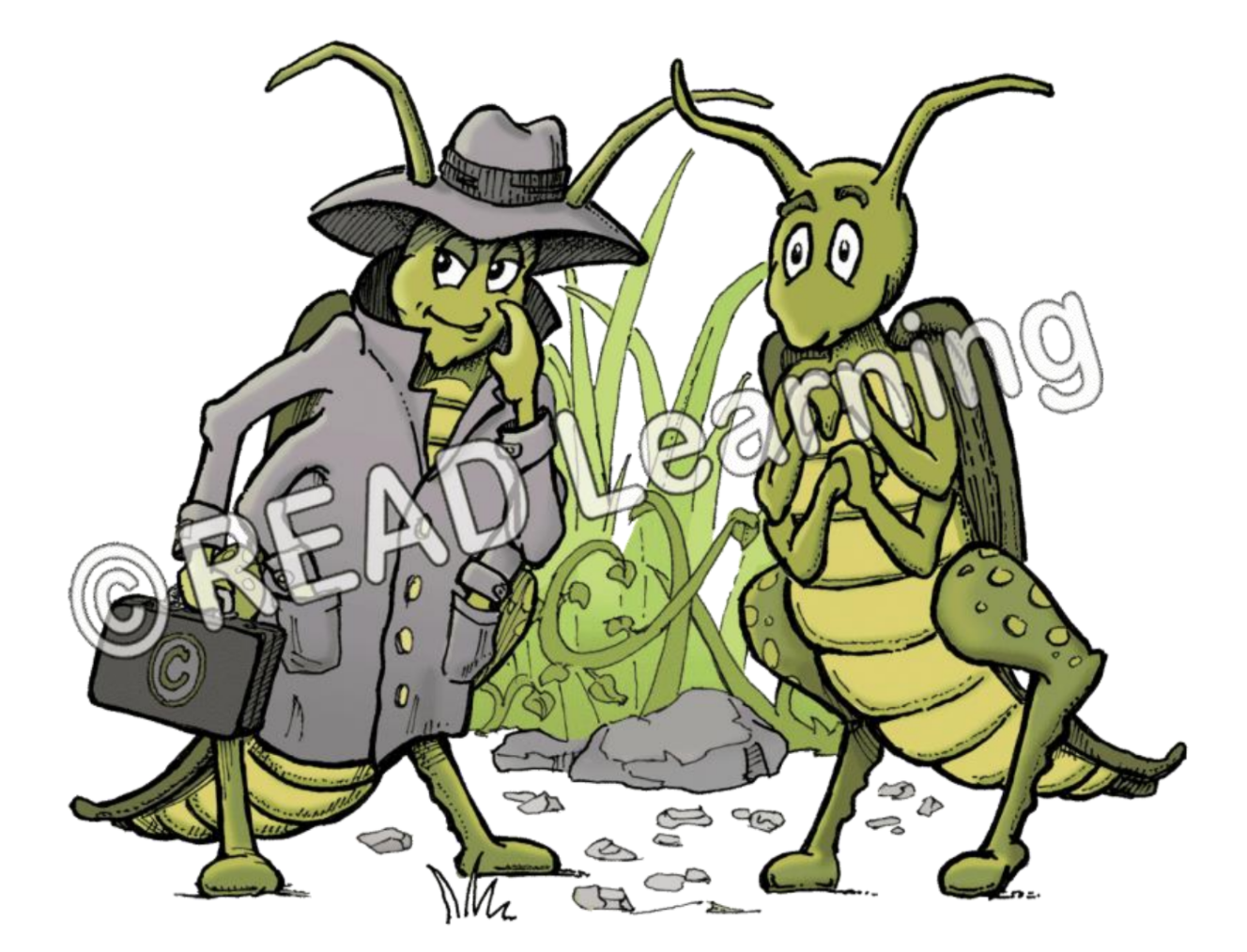
1. Spell /K/ with a C if there’s an a, o, u, or consonant after it.
If this doesn’t work...
2. Spell /K/ with a CK if there’s a short vowel in front of it.
If neither of these work...
3. Spell /K/ with a K.
Now, because this is a more complicated rule, it works well when I point out to students that they can use their student spelling rule cards to help them remember the order in which they must try spelling that middle /k/ sound. The order can be found in both the name of the rule, The Secret Cricket Has Spoken, and in the picture itself. I encourage you to take a moment to harness your inner child and indulge in a little search-and-find for the “C,” “CK,” ad “K” in our cricket illustration!
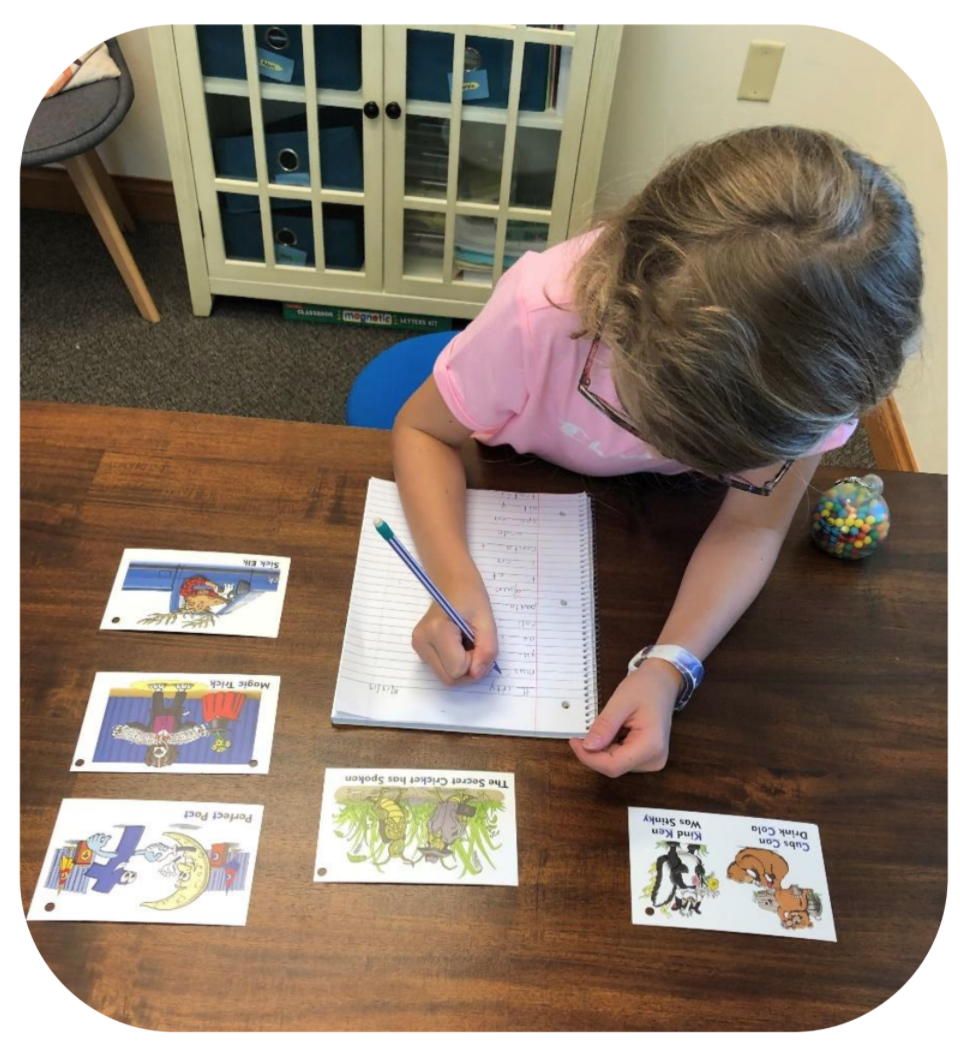 One of our students working hard to learn this new rule by using her Silver Moon Spelling rule cards.
One of our students working hard to learn this new rule by using her Silver Moon Spelling rule cards.
Important Tips to Consider
Psst...I Have FREE Resources
I’d like to share with you my secret stash of FREE resources that you can click, print, and use as you teach this rule with your students. Unlike the monotony of many reproducibles, ours tend to be interactive to facilitate active learning in our students.
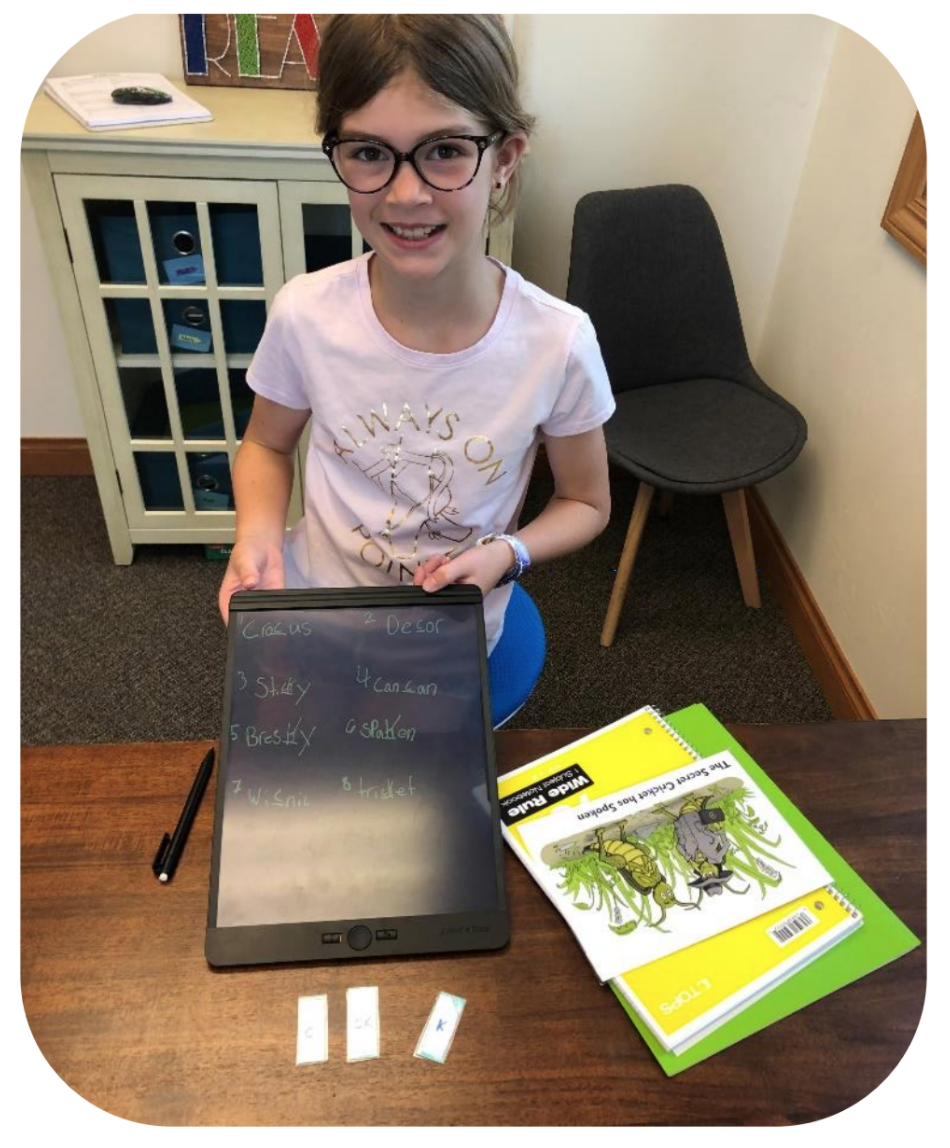 There's nothing better than finding success in a new spelling rule!
There's nothing better than finding success in a new spelling rule!
Here’s the next part of the secret: share our secrets with EVERYONE. How often are you given permission to share a secret? If you know of any teachers or parents who might benefit from our resources, please share them! Who doesn’t love free stuff?
Secret Cricket Reproducibles Here!
As always, if you found this blog helpful, please share it with your fellow teachers, parents, and interventionists. Interested in learning more? You can find our other spelling topics HERE, and don’t forget to check out our complete guide to spelling at www.Silvermoonspellingrules.com
Happy Teaching!
Written by:
Kate Wagner, BSE
Reading Interventionist, Remote Learning Coach
Imagine yourself as a struggling speller… You know your letter-sound correspondences. You’ve worked hard to learn the differences between long and short vowel sounds, and you’ve worked through these funky things called digraphs (th, sh, ch, ck, wh). Now you’d like to simply sit down and write, but as you get started, you quickly realize that there are some words that you just can’t seem to spell. These are words you’ve heard hundreds of times. You’ve even seen these words before, but of course, you can’t picture what they look like in this moment. You see, the trouble is that the sound /k/ can be spelled in several different ways! Is it ‘K’? Is it ‘CK’? You remember that ‘C’ is used quite a bit too. If only someone could tell you exactly when to use each spelling!
 Photo by Les Anderson on Unsplash
Photo by Les Anderson on Unsplash
Is your heart pumping just a little bit faster as you think about this scenario? Then perhaps this imagery is more familiar to you than it is to other adults that you know. Here’s the exciting part: There IS a formula you can show your struggling spellers that will tell them exactly when to use each spelling. Thank goodness!
Before You Begin
Before we dive into the details, let’s look at some prerequisite skills that your student will need before our new rules are taught. If you’ve read my other blogs before, some of these skills will look familiar. Before teaching, make sure your student knows:
The ‘Good Stuff’
At this point, your student knows the above skills, so it’s time to dig into the spelling rule. To properly explain how to spell /k/ at the end, let me introduce you to our guest, the Elk...

Now, Mr. Elk may not look like he’s into this gig, but I assure you, he’s just not feeling himself. In fact, he’s quite under the weather.
Sick Elk
“At the end of a word, always spell /k/ with a CK after a short vowel—otherwise use K.”
Well, I suppose Mr. Elk’s tough day has helped us discover our first rule when spelling /k/ at the end! Let’s hash that out for a moment. First, it’s important to emphasize that there are two common ways to spell /k/ at the end of a word: CK and K. In order to know which to use, the speller must look at the letter right before the /k/ sound. Then, insert a CK if it’s a short vowel and K if it’s not. Easy peasy, lemon squeezy!
Unlike Kind Ken was Stinky and Cubs Can Drink Cola, this rule is a bit easier to navigate, as your student only has to look at the letter right before the target sound, following natural left-to-right writing order. I still tell students to begin practice by leaving a blank spot at the end and referring to their student spelling rule cards before deciding how to spell /k/.
Alright, let’s allow Mr. Elk to get some rest. Before we check out those great practice activities that we’ve grown to enjoy, I have one more guest to introduce you to!
Magic Trick
I’m going to withhold our next rule for just a moment to give you a bit of background information. While Sick Elk works most of the time to spell /k/ at the end of a word, it’s important to remember that there is a special sound that we need to pay attention to. At the end of a multisyllable word, we have to break our normal Sick Elk spelling pattern when we hear the sound /ick/. That’s right; it’s like that sound you make when you smell old leftovers—“ick!!” Some might call this a ‘rule breaker,’ but instead, I like to just call it a ‘special sound.’
“At the end of a multi-syllable word, /ick/ is spelled IC.”
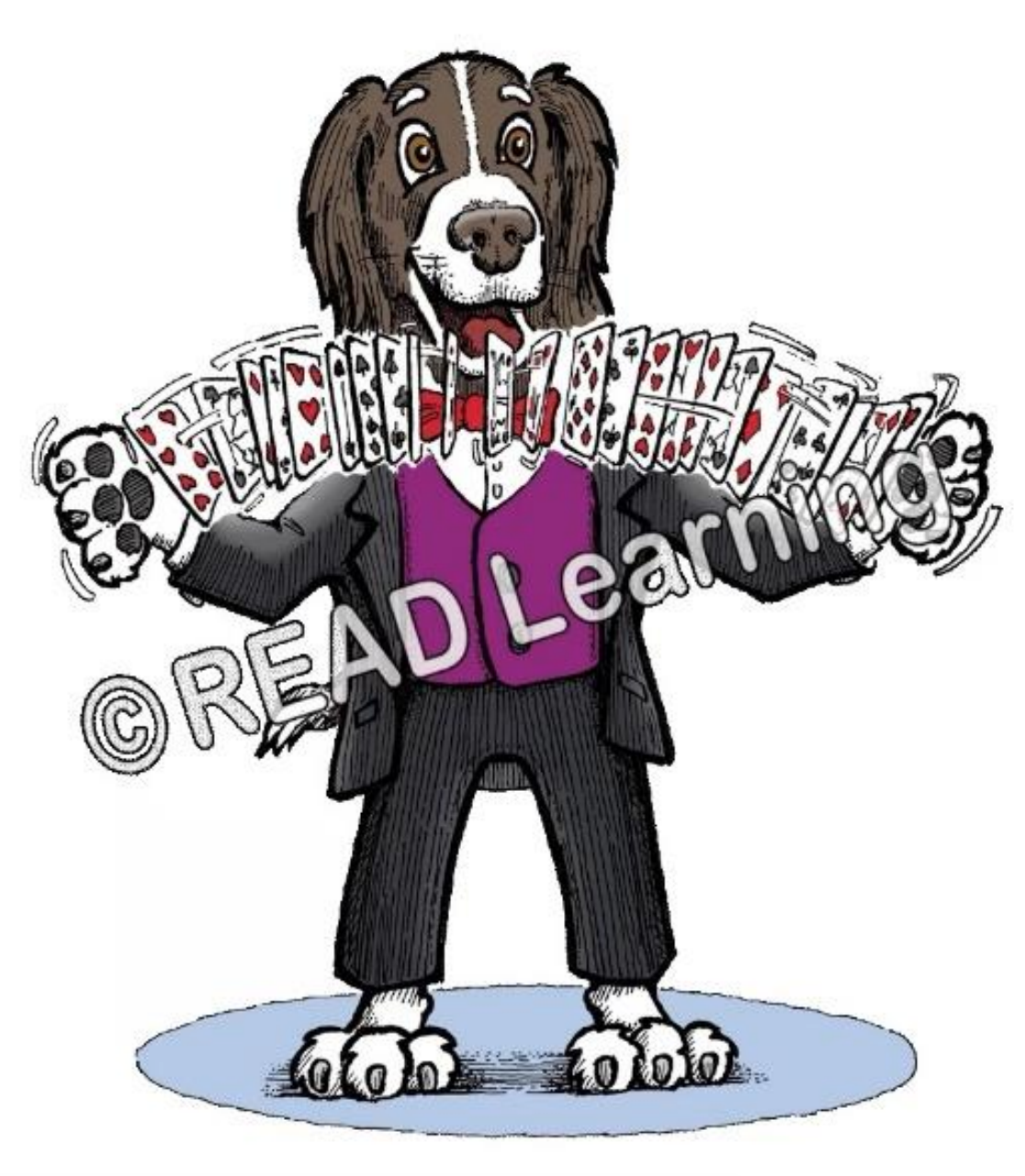
And now we can all let out that pent up, ‘aww,’ as we appreciate just how cute our magician dog friend is! 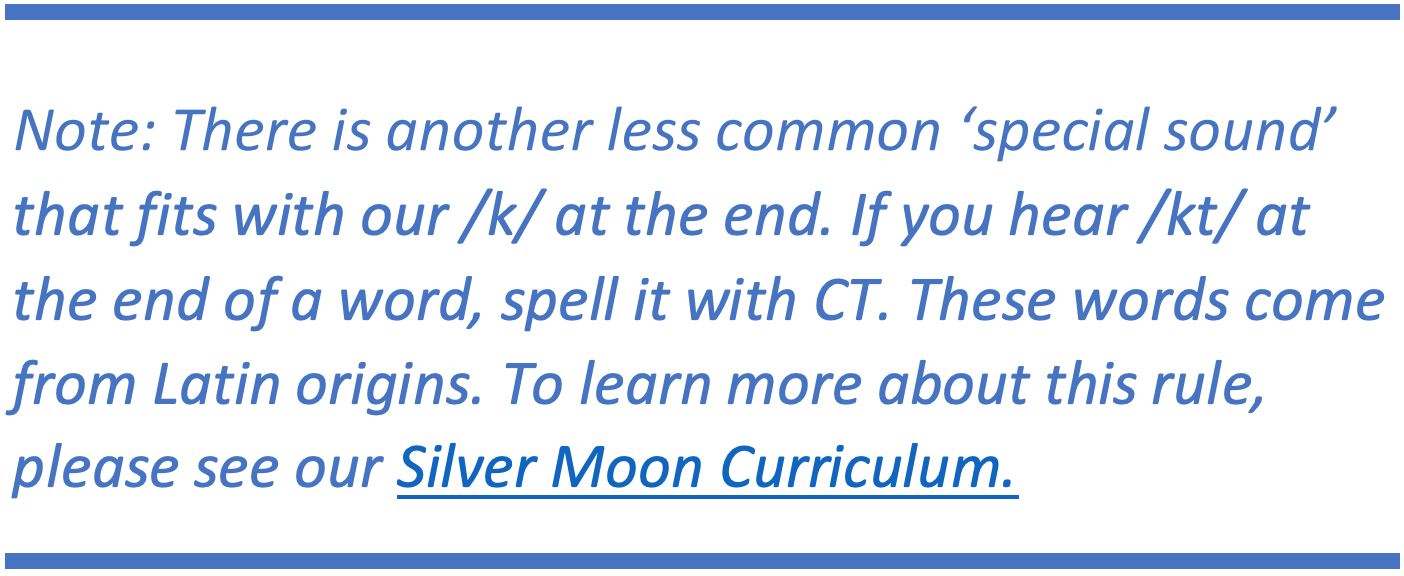
Important Tips To Consider...
More 'Good Stuff'
You may know what’s coming next, and if you do, thank you for following our Silver Moon blog. If you don’t, then let me be the first to welcome you! You are in for a treat. Below, you will find a collection of FREE practice activities and reproducibles for you to use as you teach this rule to your student. All you have to do is click, download, and print!
Sick Elk and Magic Trick Reproducibles
As always, if you found this blog helpful, please share it with your fellow teachers, parents, and interventionists. Interested in learning more? You can find our other spelling topics HERE, and don’t forget to check out our complete guide to spelling at www.Silvermoonspellingrules.com
Happy Teaching!
Written by:
Kate Wagner, BSE
Reading Interventionist, Remote Learning Coach